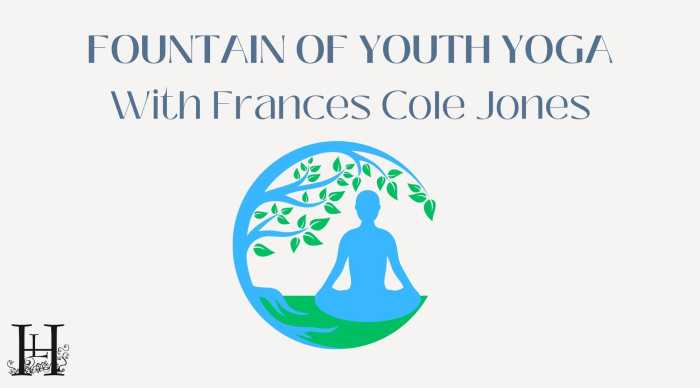LTV Screening of Music Doc Traces 'In-Between' Career of Garland Jeffreys

Bruce Springsteen is a fan. Ditto Steve Van Zandt. And Lou Reed. He was a regular at venues around the world, including Amagansett’s Stephen Talkhouse. So what happened to Garland Jeffreys? That’s one of the questions posed in Garland Jeffreys: The King of In Between, a documentary made by his wife, Claire. Her first full-length film after producing music videos for her husband. It gets a special screening this Saturday night, September 13 at LTV in Wainscott.
Claire Jeffreys is candid about her talented and troubled mixed-race husband. The now 82-year-old rock, reggae, blues and soul performer is battling Alzheimer’s. In a recent chat, she’s upbeat about the film — which debuted at DOCNYC — and just wants more people to know about the man she met a long time ago at a gig. But we begin with the couples’ Hamptons history.
A Conversation with Claire Jeffreys
Dan’s Papers: How much time do you spend out here?
Claire Jeffreys: These days almost none. We used to come out every summer for the whole season. We would rent a place in the Springs and hang out. We know a lot of people out there and Garland would perform.
DP: Where would we have seen him? And when?
CJ: We’re talking about the ’90s and beyond. I think his last performance out there was probably at the Talkhouse. But he also played some other odd places like Bay Street Theater and a couple of really high profile benefits. One had Foreigner and Suzanne Vega. He did another benefit at the Talkhouse for Mike Rubenstein. Paul Simon came to that one. So Garland had a bit of a profile in the Hamptons. But now as you know, he has Alzheimer’s. He last performed publicly in 2019.
DP: We’ll talk about him today in a moment but first, how did you two meet?
CJ: In 1981 he was performing at a little club in Asbury Park and the guy I was then dating was a rabid fan of Garland. And after the show I was in the parking lot and I looked up and Garland was in the tour bus and he sort of “crooked” his finger at me to walk over. And I did, and that was it.
DP: Springsteen is in the movie along with some other big names. Who were his biggest fans?
CJ: Graham Nash, Laurie Anderson, Mick Jones from Foreigner. He was an “artist’s artist.” And less well known.
DP: Let’s talk about that. The title The King of In-Between is about being neither black nor white? Or that he had many musical styles? Or both? Are those the reasons he was never more famous?
CJ: Well, that’s why I made the film. That’s the question I was trying to answer. I think he was trying to break through in the seventies and that was a time when if you were a “person of color” you were supposed to stay in your lane. He’s Puerto Rican, African American and white and who knows what else. (Laughs) And he grew up in Sheepshead Bay, which is next to Coney Island and he always felt like neither “fish nor fowl.”
White kids didn’t fully embrace nor did the Black kids. And he was always trying to fit in. And that became the central question of his life. So he had a little chip on his shoulder and in those days the music business was all about the label. Tour support, money to make an album, they were like parents. And if the label sensed you weren’t grateful, they were not responsive. And he was on Vanguard, Sony, RCA, A&M, major labels all through his career.
Until 2011 when we started our own label and made The King of In-Between, Truth Serum and 14 Steps to Harlem which was his last album in 2017. He was trying to do a lot of different genres and people wanted to categorize him in the industry. And frankly he was a bit of a pain in the ass.
DP: Okay but Rolling Stone named him Most Promising New Artist in ’77 so he was due, maybe, and it just wasn’t happening. It’s “promises” unfulfilled perhaps?
CJ: Thank you! Yes! That’s the whole crux of his career and I think he was a little bitter at times. But towards the end of his career he began to lose that bitterness. And part of that was me saying, “Look, you’ve been a working musician. You’ve made a lot of albums and a lot of people love your work. Yeah, you never broke through to ‘superstar status,’ but you had a really great career.” And I think he decided, “This is pretty darn great, what I’ve achieved.”
And I think whatever sphere we are all in, we feel the same way. We might think we deserve more and it doesn’t happen. Ambitions shift from your ’20s, but I hope people take away some sort of hopefulness and acceptance that we do our best work and we don’t all reach the heights. And that’s the human condition.
DP: And how is Garland today?
CJ: It’s sad because he’s still physically very strong. But he remembers nothing. A good day is he opens his eyes and gives a little chuckle.
DP: Does he recognize his own music when you play it for him?
CJ: It’s debatable. We do it. We say, “Alexa, play Garland Jeffreys” and he doesn’t respond at all. There’s a scene at the end of the film where he’s outside sitting on a bench and he doesn’t look lost, but he looks a bit out of it. But we don’t specifically mention that he has Alzheimer’s in the film. I have been talking about it in the Q and As. But I made a decision to not have the film be about that.
“The King of In-Between” screens Saturday, September 13, 7:30 p.m. at LTV, 75 Industrial Road, Wainscott. A Q&A with Claire Jeffreys follows the film. Tickets are $20 at the door.
***
Bill McCuddy is a frequent Dan’s contributor. He’s a professional stand-up comedian “sometimes” he says. “I’ve been on Conan three times if you count reruns.” He also hosts a monthly radio program on WLIW-FM and a weekly summer LTV show “Weekend Live: The Hamptons Now” with Patrick McLaughlin. He would write more but he’s winded.









